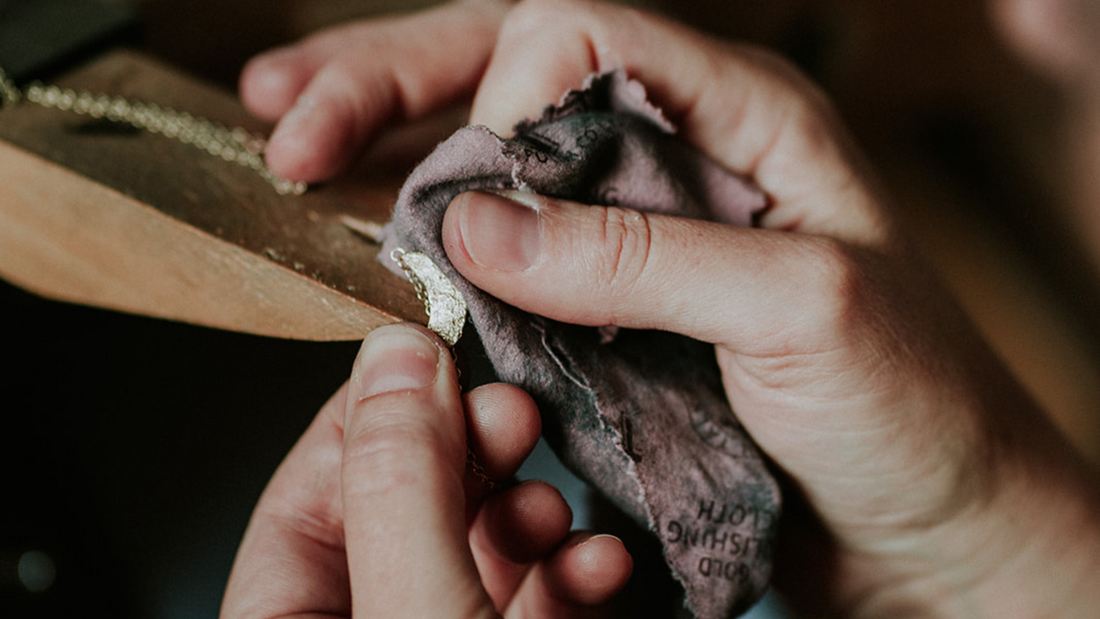As with all fine jewellery, regular cleaning can help keep your pieces looking their best. Everyday wear, or very infrequent wear, along with exposure to cosmetics, pollution and dirt can all contribute to your piece losing some of its vibrancy over time.
Dirt and dust can be easily removed by gently washing the piece in warm water with a drop of liquid soap and a soft bristled brush - I like to use a soft toothbrush.
18 carat gold is a very stable, non-reactive metal and will not tarnish, but in certain conditions 9 carat gold and silver will. On silver this manifests as a dark, greyish shadow, on gold it appears more orange-brown, and it is a natural result of the metal reacting with oxygen and a layer of oxide forming on the surface. It causes no damage whatsoever, but it makes the jewellery appear dull and discoloured.
Light tarnish is easily removed by buffing with a soft polishing cloth, but to remove more stubborn tarnish, try this easy, non-toxic method:
You will need a non-metallic heatproof bowl, a generous spoonful of bicarbonate of soda, a piece of clean aluminium foil, hot water, and your tarnished piece of jewellery. Have a small, soft bristled brush (an old toothbrush is great) and some clean, soapy water handy for later.
Put the kitchen foil and a good spoonful of bicarbonate of soda into your bowl, place your jewellery on top, and cover everything with very hot or just-boiled water.
Let it all sit for a short while. How long will depend on how stained your jewellery is, but you can keep checking to see how it's doing. 5-10 minutes is usually long enough.
After a few minutes, remove your piece and rinse it in some clean, warm water and gently wash with a little dish soap and a soft brush. If the tarnish was very heavy and is not fully removed, repeat the process again until your piece comes out shining and bright.
How does it work?
Tarnish is simply the metal oxidising - air and other elements reacting with the silver and causing a dull coating to form on the surface. When jewellery is cleaned in this way, the bicarbonate of soda triggers a chemical reaction that transfers the oxidised tarnish from the silver on to the aluminium foil. You can see below the discolouration on the kitchen foil on the right as compared with a clean piece on the left.






